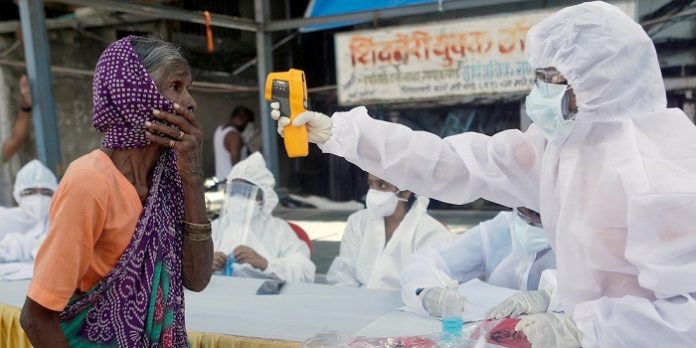India has added another 300,000 coronavirus infections to its caseload in the past four days, an infection rate which could see it overtake the United States to become the world’s worst-affected country within weeks.
The country registered 96,551 new cases – a fresh global record – on Friday.
On Monday, India had surpassed Brazil as the country with the second-highest number of coronavirus cases in the world, with 4.2 million cases. The US has a caseload of 6.4 million infections.
More than 76,000 people in India have died due to the coronavirus, which has killed more than 909,000 people worldwide.
India’s health ministry says the surge in cases is due to an increase in daily testing that has now exceeded one million.
Despite the steep surge in new cases and deaths, India continues to ease restrictions and open up its economy to make up for losses incurred during its long and punishing lockdown period, which experts believe was rushed through and “illogical”
The March lockdown forced hundreds of thousands of workers to flee cities for their homes, and experts say it probably contributed to the spread of the virus in rural areas.
Moreover, they say that the government has not successfully communicated an effective and uniform message on masking, social distancing and congregation – measures that could have helped contain the spread of the outbreak.
As the infections spike in rural areas, health experts say the country’s crumbling rural health sector is not equipped to deal with the surge in cases in the world’s second-most populous nation.
The only silver lining for the government is the high recovery rate (77 percent) and the low mortality rate (1.6 percent) – points the government continues to emphasise.
Poor health infrastructure
Even in cities, patients have had to suffer due to poor hospital facilities and protocols. Mohinder Kaur, who was admitted to a government-run Guru Teg Bahadur Hospital in the capital, New Delhi, after testing COVID-19 positive, told Al Jazeera of her ordeal.
“No one would come near us or even help us. If anyone would accidentally touch us, the staff would shout at them for ruining a PPE (personal protective equipment) kit, the 75-year-old retired school teacher told Al Jazeera.
“In this heat, the fans were not working and the staff would not get them fixed despite several complaints. The toilets were filthy and sometimes had no water. The ward had rats, lizards, cats and even dogs roaming around. It was a living hell and we are fortunate to have survived this,” she said.
India’s capital still has better health facilities in comparison to rural areas where only 20 percent of India’s doctors and 40 percent of hospitals are located. Health experts feel that this could put millions of people at risk.

“In the last week of August, the epidemic reached all nooks and corners – evidenced by infection among tribal communities. That means, spatially the epidemic has peaked,” he said.
Stage four of the pandemic
John says India has entered stage four of the pandemic, which means the country is seeing widespread transmission, and that is reflected in the record number of daily infections in the past several weeks.
But the government has so far steadfastly denied community transmission, during which the source of contagion is not known. John says India witnessed community transmission (stage three) between March and July.
The epidemiologist said authorities must move from the idea of “control” to “mitigation”.
Preeti Kumar, vice president, public health system support at the Public Health Foundation of India (PHFI), a public-private non-profit, pointed out that India is a federal state and health is largely a state subject.
“Each state has implemented the response based on the strength of its health system and available resources,” Kumar told Al Jazeera.
“Kerala and Punjab states introduced lockdowns even before the rest of the country did. Four southern states (with stronger health systems) have also tested more and reported better.
“In contrast, the poorer northern states with weaker health systems, are only now beginning to feel the impact and are struggling with testing, tracing, treating and reporting,” she said.
According to Kumar, the Indian government provided much of the leadership in the early stage of the pandemic, and continues to support through strategic guidelines, expertise and some level of funding.
Ineffective lockdown
Prime Minister Narendra Modi’s Bharatiya Janata Party (BJP) government had introduced one of the world’s strictest lockdowns, triggering a working-class exodus from cities to rural areas and smaller towns.
The two-month lockdown led to the shuttering of factories and loss of millions of jobs, and experts say the decision, taken at four hours’ notice, was “ineffective and unscientific”.


















